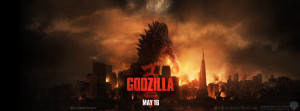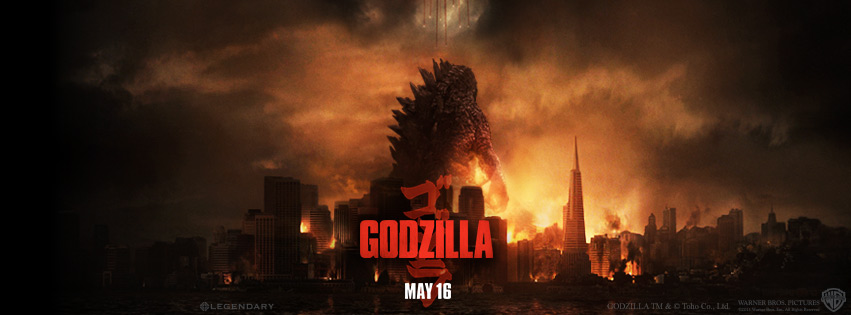By Raj Ranade
The central problem that many people seem to have with the latest film version of Godzilla is that it doesn’t have quite enough Godzilla (which, as one Twitter wag noted, is a problem it shares with most other movies in existence.) It’s certainly true that the screen-time allotments in this blockbuster are a bit bizarre – the only greater surprise than the film’s lizard-centric stinginess is how it teases us with brief Bryan Cranston and Juliette Binoche performances, only to eventually strand us with white-bread heartthrob Aaron Taylor-Johnson for most of the human screen-time.


Edwards has tried to solve this problem by pulling pages from Steven Spielberg’s old-fashioned Jaws playbook – he wants to scare you with what you don’t see. The hope is to de-familiarize this decades-old icon by using him only sparingly and memorably. It works for the most part, because Edwards has a greater talent for big-budget spectacle than, say, his Captain America and Spider-Man directing counterparts. Edwards has a real aesthetic of his own – he likes to keep his camera in close with his characters at eye-level, which means that the viewer gets a decidedly human-sized perspective on larger-than-life chaos.
When, say, Michael Bay directs his Transformers movies, his default scale is at the size of his larger-than-life gladiators. Edwards instead wants us to feel the awe of a ground floor perspective on a Vegas casino being torn to shreds by claws, or of the vehicle you’re occupying being sliced in half by spindly spider legs. These are far scarier sights than the kind of bird’s eye creature stomping you might get from someone like Roland Emmerich, in part because you have a limited perspective on forces far more massive than you. (It’s only near the very end where we get more standard versions of monster mayhem, and even then, Edwards has some particularly inventive twists up his sleeve). Edwards also has a real talent for finding eerie beauty amidst his mayhem, capturing indelible moments here like flares sailing through the sky and illuminating a massive wall of scaly skin, or a set of paratroopers trailing red smoke as they plummet through the sky towards their massive foes. There are even strains of freaky, morbid humor, like the pair of Godzilla-sized rivals who at one point share a nuclear missile as a snack, or the way that the biggest scare in the movie arguably comes from a wayward pigeon.
You do end up wondering why Edwards missed some of the other pages from that Jaws playbook. Viewers may remember that the human drama in Spielberg’s movie cribbed heavily and effectively from Henrik Ibsen; viewers will not try to remember the generics of Taylor Johnson’s marine stumbling into a cover-up and then racing through wreckage to save his wife and son. (The movie has the opposite problem of the Captain America and Spider-Man sequels, both of which were most engaging precisely when it was just the humans chatting on screen). But the triviality of the humans here is partly the point – both visually and thematically, the human concerns seem small and puny comparing to the titans stomping around them.
Like the original Godzilla, there’s a clear subtext about man’s hubris and self-importance. At first, the nuclear paranoia hereseems pulled straight from the fifties, as the characters grapple with the unintended consequences of tapping into a force whose potential they don’t fully understand . (There’s an alternate history concocted here that ties in with real events from Hiroshima through Fukushima.) But as the plot progresses, the thrust shifts away from its predecessor and towards something even more bleakly existential.
It’s not much of a spoiler to say that the human actions here at best have little effect and at worst are actively harmful. In a blockbuster landscape ruled by superheroes, humans who gain complete control over their own destiny and that of mankind, here is a movie that points to humanity’s powerlessness in the face of nature. It’s a comparatively bitter pill, but one that resonates all too well given the looming ecological catastrophes of our era.









